The Notzuchitokage
Posted by: Loren Coleman on May 21st, 2009
The Notzuchitokage
By Brent Swancer
Japan seems to be a country with its fair share of zoological mysteries and perhaps the most well known example is a reptile that perhaps holds a deeper mystery than it may at first seem.
One of the most famous cryptids in Japan is the Tsuchinoko, a type of unknown snake recognized by its distinct fat body and strange methods of locomotion, such as making giant leaps or rolling end over end. It is also notable for its purported unusual vocalizations, which include chirps, grunts, howls, growls, and mimicry of various animal sounds or even human voices. This is the popular modern image of the Tsuchinoko, the one cryptozoologists are most likely to be familiar with, and the description given most commonly by eyewitnesses who have reportedly seen it.
The cases illustrated above are generally labeled as examples of Tsuchinoko. Nevertheless, you can observe that some merge into a different description, as seen here for the second example.
Some older stories often make references to Tsuchinoko having two front legs. Since this conflicts prominently with what is typically reported, is there a chance that these accounts of two legged Tsuchinoko perhaps refer to an altogether different animal?
In the rural mountainous areas of Japan, there have been occasional tales of a mysterious reptile known as the Notzuchitokage. The Notzuchitokage is said to be around 70cm in length, with light to dark reddish coloration. The upper body resembles a lizard’s, with two legs, while the lower body is long, lacks hind-limbs, and resembles a snake. The head is often described as looking like that of a crocodile or alligator, and the creature’s tongue is sometimes said to be dark or black in color.
Although rare, fairly recent reports of these creatures have been made on occasion and they are different enough from Tsuchinoko reports to warrant attention. For instance, in 1974, a Yuyama Minamishigara saw one on a narrow dirt road in Kanagawa prefecture. The animal was described as being around 1 meter long, and 25 to 30 cm around. It was dark red in color, with a black tongue lolling out of its mouth. The animal had two clearly visible front legs.
Another sighting was made in September of the same year, 1974, by a Mrs. Yamazaki of Aichi prefecture on an abandoned road on the Tokai Nature Trail. In this report, the two-legged creature was said to be a bright red color, with stripes and a black triangle on its head. It was described as having a mouth like a crocodile.
Old stories and folklore made no distinction between the legged and the more famous legless variety of Tsuchinoko, they were known as Tsuchinoko whether they had legs or not. However, there are several reasons to suppose that we are quite possibly dealing with two markedly different creatures that were for whatever reason lumped together in more ancient times. Besides being clearly differentiated in more modern accounts, there are differences in behavior and appearance that seem to suggest that if they exist, the Tsuchinoko and Notzuchitokage are quite different animals.
The most glaring difference is the presence of two clear front legs in Notzuchitokage, while the more well known Tsuchinoko is quite clearly described as snake-like. The Tsuchinoko is described as more like a viper than a lizard, and is not ever mentioned as having legs in modern day sightings. In addition, the two-legged Notzuchitokage is not known for moving in any particularly dynamic fashion. Whereas the Tsuchinoko is reported to do things such as roll in a hoop, leap several meters, or even tumble end over end, the Notzuchitokage is mostly said to just scurry or crawl along. It is also not particularly linked to water, unlike the water loving, more snake-like Tsuchinoko.
When trying to assess whether we are dealing with one or two types of unknown animal, it is helpful to try and assess just what it is that people could possibly be seeing in the first place.
One of the main proposed culprits for Notzuchitokage sightings is that people are misidentifying blue tongued skinks, of the genus Tiliqua. While these types of skink are not native to Japan, they have been popular as pets there, and could quite possibly have been somehow introduced into the wild. These skinks have relatively short legs on a long, thick body, so perhaps people are simply not seeing the hind-legs when they make a sighting, and are thus left with the impression that they have seen some sort of two legged lizard.
These skinks are also characterized by their blue tongues (hence their common name), which could be described the dark or black color mentioned in some Notzuchitokage reports. Blue tongued skinks have heads that could be seen as somewhat reminiscent of a crocodilian, also an attribute mentioned in some reports.
Interestingly, the blue tongued skink is also often used to explain the Tsuchinoko, the difference being that due to the small limbs of these skinks, witnesses in those cases are not noticing any legs at all. If this is true, then it could be seen as a basis on which there might be a common connection between the Tsuchinoko and Notzuchitokage. Perhaps the two cryptids really are one and the same, and are both just misidentifications of blue tongued skinks made under differing circumstances. Over the years these conflicting reports of the same creature could then have been erroneously separated into two separate kinds of cryptid. It seems possible to an extent, but what of the medieval accounts made long before the pet trade would have introduced blue tongued skinks to Japan’s shores?
Speculation abounds on what what the Tsuchinoko could be. From misidentified blue tongued skinks to overfed snakes, to a new type of viper, the search for answers has focused mostly on what would look snake-like. But is there any possibility of the presence of distinct, two legged reptiles in Japan that could explain Notzuchitokage reports, as well as the old tales of two legged Tsuchinoko?
In fact, there are known animals of this kind that do exist. One possibility is that we are dealing with some type of undiscovered species of the family Bipedidae, commonly known as the two legged worm lizards. The general appearance of these creatures certainly seems to fit the bill.
Two legged worm lizards are quite unusual looking, with a long, serpentine body lacking hind limbs, and just two forelimbs used for digging. They are also pinkish in color, which could account for descriptions of a reddish hue in Notzuchitokage reports. Bipedidae are found only in Mexico, and are rarely seen by humans due to their burrowing nature, however it is intriguing to think that a similarly adapted creature might be found in Japan whether they are directly related or not.
Another more bizarre possibility is that Notzuchitokage could be a sort of surviving transitory species between snakes and lizards. Although extremely rare, fossils of this type have been found before. In Lebanon, a fossil was found of a creature known as Eupodophis descovensi, from the Late Cretaceous around 92 million years ago. The fossil is a rare glimpse of what is believed to be a transitory stage between lizards and snakes, with two hind legs clearly intact. Although the legs on the fossil are located far down the body rather than in the front, it illustrates the possibilities.
Even modern snakes such as boas and pythons possess tiny spurs on their lower bodies, the remnants of legs, that are now used primarily as “grippers” during mating. Is the Notzuchitokage perhaps some sort of surviving transitory animal that is an amalgram of certain lizard and snake features? It seems unlikely, but interesting to speculate on nevertheless.
It seems worth keeping in mind that it is possible that looking at explanations for two legged lizards may not be necessary. A snake could perhaps be mistaken as having two legs under certain conditions just as a skink could be mistaken for having none, but the questions remain. Are the Tsuchinoko and Notzuchitokage one and the same animal, or are they different? Could the same culprit be behind stories for both of them? Are we dealing with one cryptid or two? Are they misidentified known animals or something new?
Whatever the Nodzuchitokage and Tsuchinoko are, it seems worth considering the possibility that there could be more than one undocumented type of reptile lurking in the remote forests of Japan.
About Loren Coleman
Loren Coleman is one of the world’s leading cryptozoologists, some say “the” leading living cryptozoologist. Certainly, he is acknowledged as the current living American researcher and writer who has most popularized cryptozoology in the late 20th and early 21st centuries.
Starting his fieldwork and investigations in 1960, after traveling and trekking extensively in pursuit of cryptozoological mysteries, Coleman began writing to share his experiences in 1969. An honorary member of Ivan T. Sanderson’s Society for the Investigation of the Unexplained in the 1970s, Coleman has been bestowed with similar honorary memberships of the North Idaho College Cryptozoology Club in 1983, and in subsequent years, that of the British Columbia Scientific Cryptozoology Club, CryptoSafari International, and other international organizations. He was also a Life Member and Benefactor of the International Society of Cryptozoology (now-defunct).
Loren Coleman’s daily blog, as a member of the Cryptomundo Team, served as an ongoing avenue of communication for the ever-growing body of cryptozoo news from 2005 through 2013. He returned as an infrequent contributor beginning Halloween week of 2015.
Coleman is the founder in 2003, and current director of the International Cryptozoology Museum in Portland, Maine.


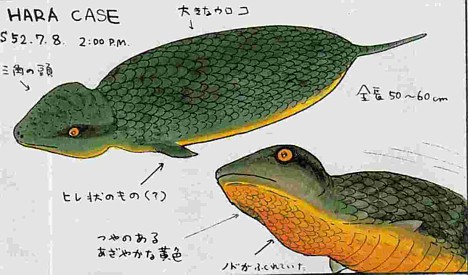


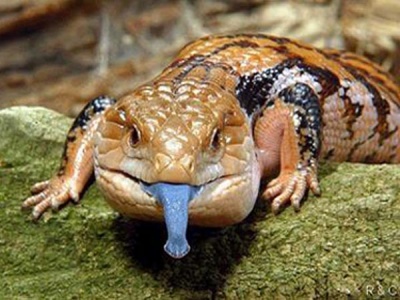
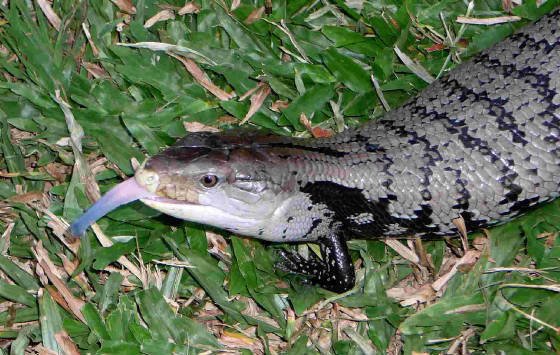
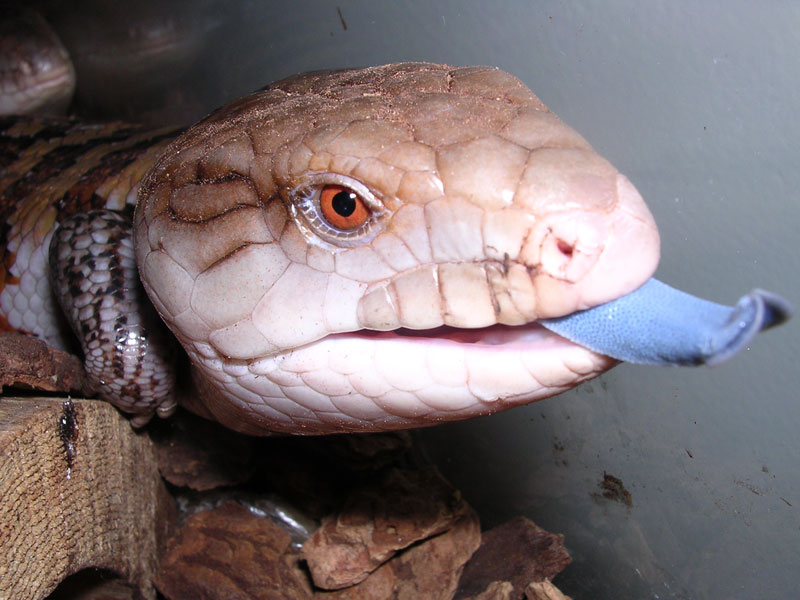

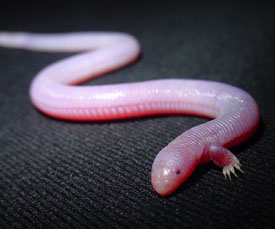









Maybe it’s just Mothra…..
Great post as always, Brent.
It actually might be a skink indeed, although a giant one.
It is interesting to consider that the skink might have been brought to Dai Nippon by medieval traders.
I didn’t know skinks were “tradeable” stuff back then 🙂
Whatever it is, it is certainly thought-provoking. It would be wonderful if it turned out to be a survivor from prehistoric times.
Would certainly “turn a lot of heads.” Yes, indeed.
Keep up the good work.
Brent,
Thank you so much for taking the time to write these articles. I truly enjoy learning about cryptids from other areas and I am especially fascinated with Japanese Folklore.
Besides the Kappa, are there any other cryptids that resemble the ‘demons’ of the old folktales?
Another excellent piece. When I read about these accounts I keep thinking about two other folkloric creatures from other parts of the world. With the leaping and the two front legs I keep thinking about the Tatzelwurm, and wonder about connections there. Then the rolling makes me think of the long traditions of the Hoop Snake.
I didn’t know skinks had been kept as pets for that long in Japan. Another very interesting tidbit.
Thanks again for keeping us informed.
Excellent report Brent. Very concise, logical examination of what these animals could be. Good point about the Bipedidae – not many people know they even exist.
Hey all, thank you for your kind words. I’m always happy when people here enjoy these articles. I’ll certainly try to keep it up. A few little thoughts on what has been said so far.
Flame821- If you mean creatures or yokai(Japanese folkloric entities) that are considered to be possibly real creatures, then I can certainly think of one that might resemble a “devil.” The winged Tengu could possibly be seen as possessing attributes that could be considered devil-like, or similar in some respects to the oni of Japanese lore. “Oni” directly translates to “devil” or “demon,” although they are variously described as being sort of the Japanese equivalent of trolls, ogres, or goblins.
Ceroill- Yes, I was actually going to mention the Tatzelwurm in this article. The Notzuchitokage is very similar in many respects to the European Tatzelwurm. It makes me wonder if a similarly evolved animal could be behind both of these far flung cryptids. I know, for example, that Loren has put up an article on the Tatzelwurm here on Cryptomundo that also mentioned the possibility of something like two legged worm lizards, the Bipedidae being at the core of those stories. Similar traditions to the Hoop snakes are definitely present in Tsuchinoko reports as well. I agree that it is fascinating to consider the similarities between creatures from completely separate cultures across the globe.
Alligator- Thank you for your kind words. It means a lot coming from another commenter who I also to be very logical and rational in their approach to these things, in your case especially reptile related ones.
A general comment to no one in particular I’d like to make in order to clarify what I meant about the skinks I mentioned here. I am not sure if these animals were ever traded here in Japan in medieval times. As a matter of fact, I find it perhaps unlikely and actually meant my mention of it in this article as a reason I find the skink explanation questionable. I find it somewhat hard to swallow that blue tongued skinks would have been traded and managed to find their way into the wild in those ancient times. Since tales of the Tsuchinoko are present in even Japan’s oldest written texts, it seems doubtful that any sort of pet trade could have started this folklore to begin with.
I think more likely is that modern day witnesses have maybe seen these skinks and likened the strange (to them) sight to a well known fantastic animal that most resembles it, the Tsuchinoko. This cryptid is so well known in Japanese society that it is entirely plausible for someone to make that jump. However, those ancient stories of Tsuchinoko had to have started from something, and I think that blue tongued skinks were perhaps not it.
Maybe the skinks were traded back in those days, but not that I am aware of. I suppose that it could have be a type of native lizard similar to a skink that is either now extinct or is still out there undiscovered.
Thanks for the article.
Doesn’t it bug you that in so many cryptid encounters no one is carrying a gun or a camera, and if they are by chance carrying said gun or camera they are usually a lousey shot with both (apart form the Shunka Warak’in!)?
It could be an unidentified snake or lizard, but I think that the reports throughout the ages cannot all be put down to misidentification or imagination. Too many times we presume observers ignorant or stupid because what they relay seems to fantastical. Not sure about a metre long skink though!
I am of the mind that the claws on the back end of boas and pythons have always been used for mating, and were never co-opted from legs. What mechansim would turn back legs into ‘gripping’ claws could only be described out of the bounds of empirical science. That would seem to me to require some sort of reasoning or intelligence beyond chance driven by environment, mutations or punctuated equilibria nonsense.
You know, there seems to be a great deal of similarity between these creatures and the Tatzelwurm reports of mountainous areas of central Europe.
Dear Brent
Have you found out any more about the Notzuchitokage in the aprox 4 years since you wrote this? Also, are you aware of any cryptids in Hong Kong over the last 100 years or so or present day?
Thanks
Richard
Ricardodevo- Hi there, thanks for your inquiry. I have not gotten much follow up information on this particular cryptid, although I have quite a bit on its more well known cousin, the Tsuchinoko.
As for Hong Kong cryptids, there is one very intriguing case. In 1989, there was a large, tiger-like mystery cat that was sighted in the area and was reported to have killed over 20 dogs. It was reportedly a grayish color, about 3 feet high, and 4 feet long.
Now that you have brought it up here, I think I will write up a full article on this particular Hong Kong cryptid and post it here on Cryptomundo. I do hope you will check it out when I do.
Hi Brent
Thanks for your reply, I’m not suggesting you are making a mistake regarding the Hong Kong mystery cat, but I looked into this case myself once. It is quite possible that the event took place in the 1960s or 1970s as I believe the author of the website where I read about it mixed up the date of publication of Karl Shuker’s book Mystery Cats of the World which was published in 1989 and which mentions this cat with the date it was actually seen. Which according to Shuker and others was about 20 years before 1989.
Nevertheless I think that whatever it was, remains a mystery.
Are you familar with my magazine Flying Snake? I mention a 2 legged “snake” seen in Japan in the early 1920s which I detail in issue 4 which comes out in November.
Ricardodevo- Well, it’s perfectly possible I made a mistake on that one. You asked about it and I just pulled that one off the top of my head.
For some reason 1989 is the year that is stuck in my head on that one. I actually first knew about that one from Shuker’s book and I have the feeling I may have read the same article on it that you did, so maybe I made the same mistake. I just sort of gave you an answer based on what was in my head at the time, so yes I may be mistaken. I will look into it.
Nevertheless, if I do cover it in a piece here on Cryptomundo, you can rest assured that the content will be correct, as I am a meticulous and thorough researcher on my articles.
I have not heard of your magazine, but it sounds interesting. I must say that I know of many Japanese cryptids both well known and obscure, and have written extensively on them here at Cryptomundo. Many of them are hardly mentioned, if at all, in the English literature on the subject. I thought I knew pretty much all of them. However, I have not heard of the flying snake you mention, so you have my interest on that one!
Hi again
If anyone knows about this particular mystery Hong Kong cat it would be Jon Downes of the Centre for Fortean Zoology U.K. He is a friend of mine and we are compiling information for a future book – The Mystery Animals of Hong Kong.
The snake from c. 1922 I told you about in Japan wasn`t a flying snake.It looked like a snake,but had a horn and 2 legs towards the back of its body. Hence my interest in your own blog.
About 18 months ago I found a story of a flying snake in Manchuria c. 1905. Have you found any stories of flying snakes in China or Japan,other than dragons?
Ricardodevo- Sorry, my mistake about the “flying” part of that snake account.
That Hong Kong cat is the only cryptid from that area that I know of, so it will be interesting to see what others you will discuss. Japan has a rich history of cryptids that I will also be exploring in a book if I ever get it finished.
I am not aware of any reports of flying snakes in Japan as cryptids, although there are yokai that are reminiscent are similar to what one might consider flying snakes. If you are not aware, yokai is a blanket term that refers to various supernatural or mythical Japanese creatures, as well as various “boogie men” and what not.
Some yokai have occasional connections to cryptozoology, but generally I consider them to be more folkloric references rather than descriptions of real creatures. There are some yokai that are reminiscent of flying snakes, but the heavy supernatural overtones of these makes it unlikely that they have any relation to a real biological creature.
Strange flying cryptids abound in Japan, but I am not aware of any sightings of alleged real flying snakes. If I come across any such reports in my research, I will be sure to let you know about it.